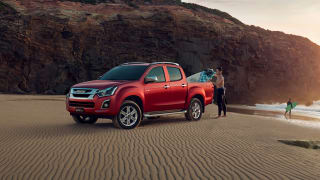Our test vehicle is as basic as an X-Class can get - the X220d Pure 4x2 dual-cab with six-speed manual transmission for $46,400. It's effectively a 'Hi-Rider' in industry speak, even if M-B doesn't use that term.
Given its work-focused specification, with hose-out vinyl floor, 17-inch steel wheels with 255/65 R17 road-biased tyres and matching spare, plus black bumpers, door handles, hub caps, etc, with not a hint of bling anywhere (bar the shiny three-pointed star on the grille), pricing north of $46K (before on-road costs) is Pikes Peak steep compared to the competition.
For example, the Ford Ranger Hi-Rider 4x2 in base-level XL trim with 2.2-litre diesel and six-speed manual is only $36,390 and Toyota's HiLux Workmate 4x2 Hi-Rider with 2.4-litre diesel and six-speed auto is $39,490.

And keep in mind our test vehicle also has the $1300 'Plus Package' ('Parktronic' and adjustable load-securing rail system), optional 1-DIN audio access ports ($150) and rear window guard frame ($490), raising the price to $48,340. That's a lot of money for a new player to be asking at base level, regardless of how much its star may twinkle.
Even so, the X220d's standard equipment list does include useful stuff like front fog lamps, DRL and dusk-sensing head lights, cruise control, tyre pressure monitoring, rear view camera, four 12-volt sockets, load tub light, four-speaker audio system with big 7.0-inch screen, multiple connectivity including Bluetooth and steering wheel controls, plus benchmark safety.















